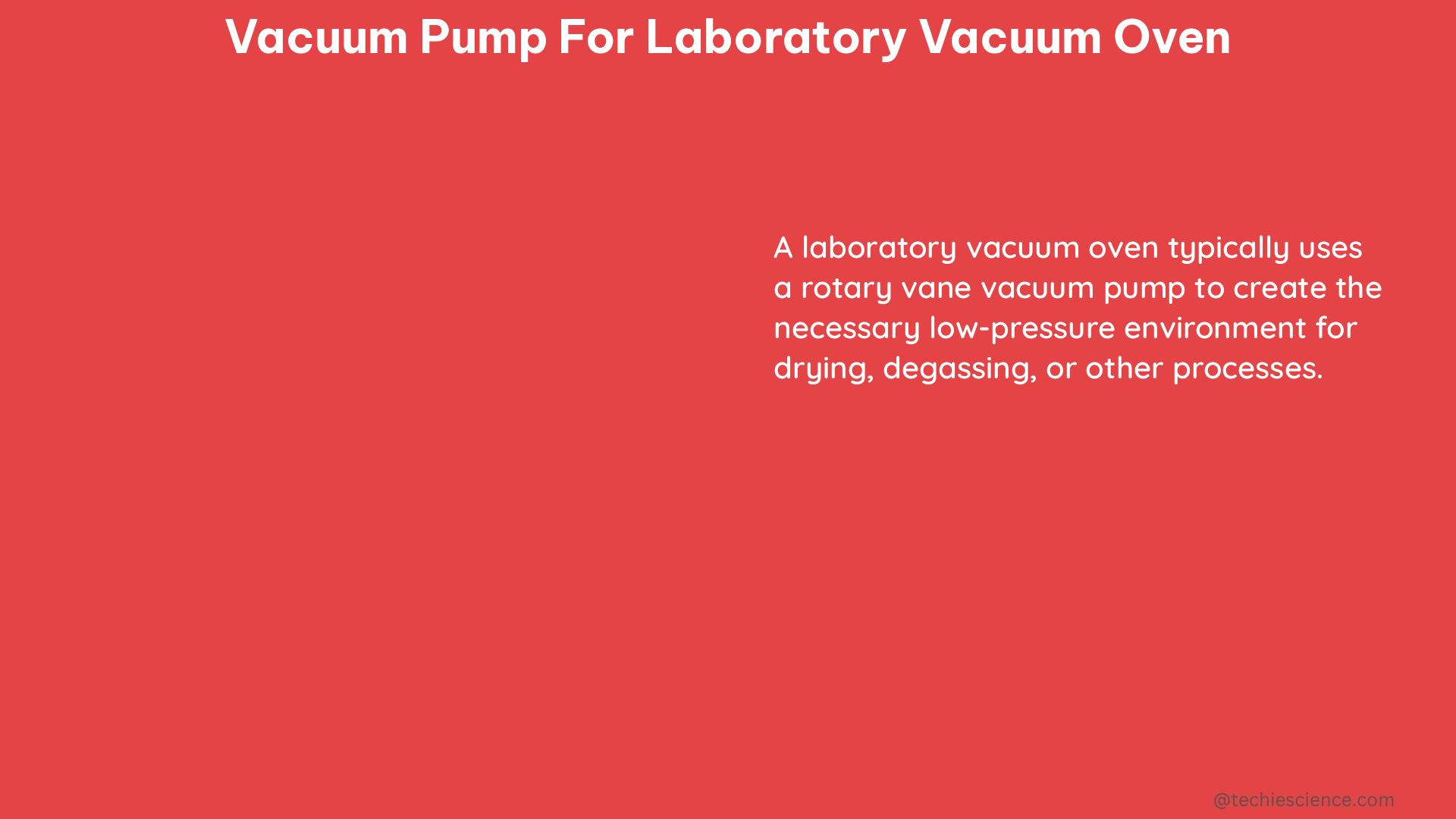The vacuum pump is a critical component of a laboratory vacuum oven, responsible for regulating the pressure inside the oven and facilitating essential processes such as drying, decontamination, and outgassing. This comprehensive guide delves into the measurable and quantifiable data points that are crucial when selecting a vacuum pump for your laboratory vacuum oven.
Vacuum Range
The vacuum range of a laboratory vacuum oven typically spans from normal pressure to rough vacuum, with a regulated vacuum level between 5 mbar and 1100 mbar. This wide range allows for versatile applications, from gentle drying of heat-sensitive materials to more aggressive processes that require a deeper vacuum.
Ultimate Vacuum

The ultimate vacuum, or the lowest achievable pressure, is a critical specification for vacuum pumps. This parameter can be determined by using a calibrated gauge to measure the pump’s ultimate vacuum. For instance, a high-performance vacuum pump for a laboratory vacuum oven might be capable of reaching an ultimate vacuum of 1 x 10^-3 mbar (1 μbar) or even lower, depending on the specific model and design.
Flow Rate
The flow rate of a vacuum pump, measured in liters per second (L/sec), is another essential specification. A higher flow rate indicates the pump’s ability to evacuate the oven more efficiently, reducing the time required to reach the desired vacuum level. Typical flow rates for vacuum pumps used in laboratory vacuum ovens range from 2 L/sec to 10 L/sec or more, depending on the size and application of the oven.
Evacuation Time
The evacuation time, or the time it takes for the pump to reach the desired vacuum level, is a crucial consideration. A faster evacuation time translates to improved productivity and efficiency in your laboratory. For example, a high-performance vacuum pump might be able to evacuate a laboratory vacuum oven from atmospheric pressure to 5 mbar in as little as 1 minute.
Pump Fitting Type
The type of fitting used to connect the vacuum pump to the oven is also relevant. Common fitting types for laboratory vacuum ovens include KF (Kleinflansch) and ISO (International Organization for Standardization) flanges, with sizes ranging from KF16 to KF40 or ISO63 to ISO100, depending on the specific oven and pump requirements.
Degree of Vacuum
The degree of vacuum that the pump can achieve, both with and without a ballast, is another critical specification. The ballast feature allows the pump to handle condensable vapors, such as those generated during drying or outgassing processes, without compromising its performance. For example, a vacuum pump might be able to reach a degree of vacuum of 4 x 10^-4 Torr with a ballast and 1 x 10^-5 Torr without a ballast.
Power Consumption
The power consumption of a vacuum pump is an important consideration, particularly in terms of energy efficiency and operating costs. Vacuum pumps used in laboratory vacuum ovens can range from 1400W to 2500W or more, depending on the pump’s size, capacity, and technology (e.g., rotary vane, scroll, or turbomolecular).
By carefully considering these measurable and quantifiable data points, you can select the most suitable vacuum pump for your laboratory vacuum oven, ensuring optimal performance, efficiency, and reliability in your critical applications.
References:
- Being Lab USA – Vacuum Oven 20
- Thermo Fisher Scientific – Vacuum Ovens Portfolio Brochure
- VACUUBRAND – Checking the Functionality
- DOMA Group – Vacuum Pump Specifications
- Thermo Fisher Scientific – Vacuum Oven Manual

The lambdageeks.com Core SME Team is a group of experienced subject matter experts from diverse scientific and technical fields including Physics, Chemistry, Technology,Electronics & Electrical Engineering, Automotive, Mechanical Engineering. Our team collaborates to create high-quality, well-researched articles on a wide range of science and technology topics for the lambdageeks.com website.
All Our Senior SME are having more than 7 Years of experience in the respective fields . They are either Working Industry Professionals or assocaited With different Universities. Refer Our Authors Page to get to know About our Core SMEs.